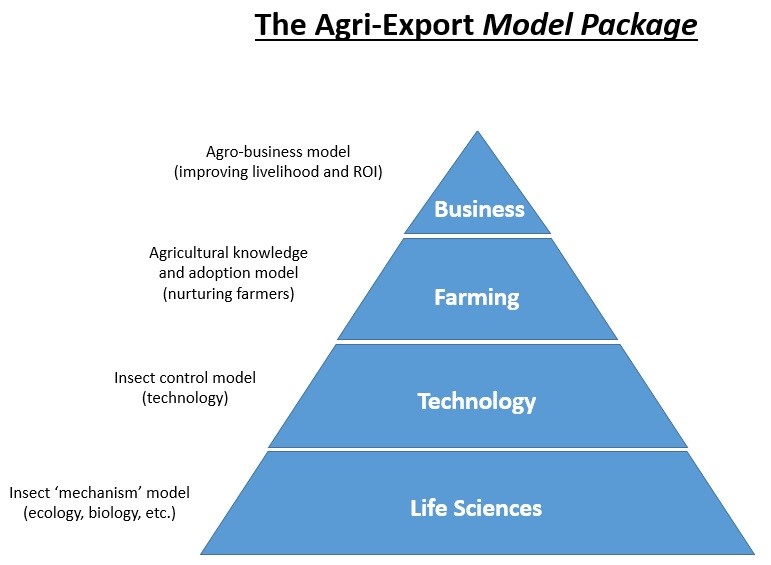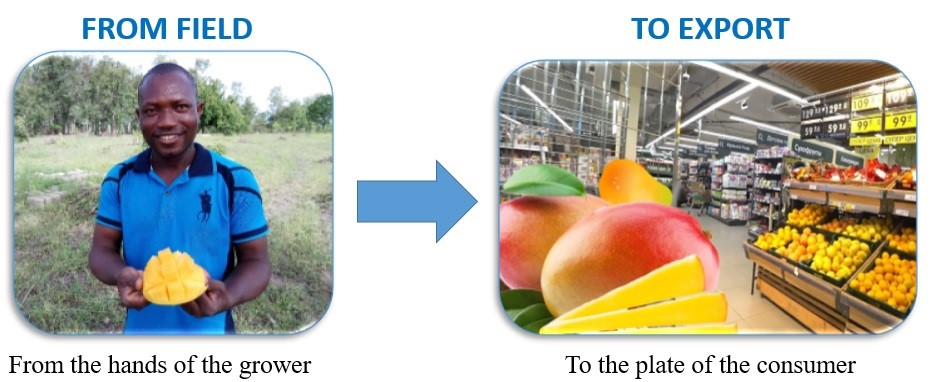(Note that the article is presenting, discussing, describing, and dealing with global problems while referring to Africa as a Case Study).
Pest control and irrigation, both are necessary to maintain sustainable agriculture.Sustainable agriculture is a basic requirement to enable farmers to have, get, and rely on a stable income.The higher and most profitable livelihood is most frequently coming from export markets.
When we consider export markets, we immediately notice the higher emphasis and importance of pest control.The reason is that the main parameters for export include quality control of; zero/nearly-zero chemical residues and zero infestation of quarantine pests.
Let’s look at a certain situation – over 95% of African fruit growers that I know rely only on rainfall for irrigation (natural irrigation). The result? High-quality low-yield produce.
At the same time, the same farmers rely on ‘natural pest control’ or the ‘common commercial pest control’ (sprays, traps, and sanitation), for fruit fly control.
The result? Low quality and due to high infestation and chemical residues – an inability to export, and often even to sell in the local market.
Note that when exporting agriculture products no one asks us about the irrigation protocol. However, the pest control protocols, reports, documents and the outcome results of infestation and chemical residue level are closely monitored.
Hence, we conclude that irrigation is not a “prerequisite” for exports while pest control is, and therefore holds the potential for immediate influence on income increase.
The Model Package
In the previous article (link), we discussed about the benefits of using Models as opposed to the Trial and Error method.
I wrote about two essential models for sustainable agriculture (and pest control in general);
Model 1 – for better ‘understanding’ pests, and first and foremost, the mega-pests.
Model 2 – to help us create solutions that are more effective and suitable for pest control (based on Model 1).
In this article, we will complete our discussion on what other models we need in order to create or establish a sustainable, profitable, export-based agriculture.
As we have seen, dealing properly with pests, especially quarantine pests (e.g. fruit flies), is a prerequisite for growing high quality produce suitable for export.
If we agree that Export, in all its forms, is a sign for progress, leadership, and continuous prosperity, then we must ask; “what else (in addition to excellent pest control) farmers need to be qualified for exporting?“
To answer that question we will divide the above question into two parts, and two more models, in addition to the previous two.
In order to maintain sustainable and prosperous agriculture we need to develop at least four basic models. The first two already discussed above and the previous article (link):
Model 1: Insect ‘mechanism’ – A model that will allow us to better understand the relevant local pests.
Model 2: Insect control – A model that will allow us to develop appropriate tools to effectively deal with those pests.
Model 3: Knowledge transfer and adoption – A model enabling farmers’ continuous development and improvement in the knowledge and applying level.
Model 4: A business model – export-based to maximize the economic potential.

Elaborating On The Two Additional Models:
Model 3 – Agricultural knowledge transfer & adoption. The next step, after we overcome the pest control challenge is the continuous ability to produce high-yield and high quality.
How does it happen? Through different channels, we present, introduce and make accessible to farmers to learn about new ideas, approaches, methods, technologies, tools, etc.
Even when the farmer is exposed and have access to novel techniques and new ideas, it is still up to him how fast he is ready to adopt it and correctly apply the innovation at his own fields.
Model 4 – Business model. Every business owner knows that it is not enough to produce the best, highest quality, lowest cost and best price product.
To realize the potential of a product/business you must have a complementary business model. Agriculture is no exception to this rule.
When we talk about export and export markets, it makes it quite obvious that it is not to the farmer to deal with the export, as farmers’ involvement and contribution is limited to Model 3.
Model 4, including exports, is complex and requires government intervention. Hence, it is typically managed by one of the following organization, or a combination: government, big and well-organized groups of farmers, NGO, private, and government-private.
Models’ Sequence
The sequence of models, as presented in the Model Package, is of high importance. Any attempt to skip over a stage is doomed to fail with high costs, wasted efforts, and loss of considerable time.
Such attempts can be found in growing fruits (Model 3) highly susceptible to fruit flies, without considering the need for a quality solution (Model 2) for these mega-pests.
A Personal Request
I wish to ask you to provide me with your opinion, thoughts, insights, and comments regarding the Model Package and its elements.
A successful model is not only a personal goal of mine; it is the (critical) missing link between Africa’s current limping agriculture and economy to a much more successful one.
A successful model will put an end to the spending of billions of USD on models that do not work and never proved themselves.
It is a necessity and the desire of millions to see Africa as the World Food Barn and it is an immediate need to promote Africa’s agriculture and its economy, to a level of a world leader.









